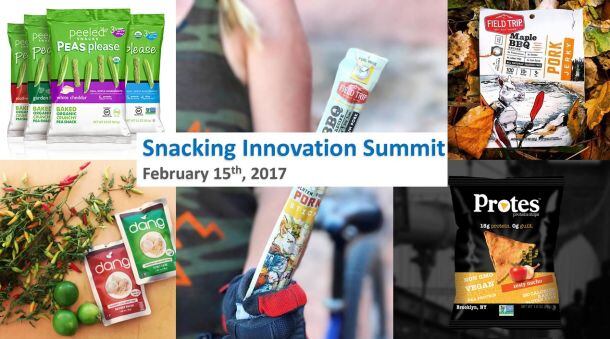Sales of pulse-based snacks, including those featuring chickpeas, peas and other legumes, grew 8% in the year ending Oct. 30, 2016, Packaged Facts says in a new report released in January. In particular, it adds, chickpea-based pulse snacks did “phenomenally well” in 2016, growing more than 150% over the prior year. Lentil and pea snacks also did well – climbing double-digits in the period.
In addition, the percentage of snackers reaching for pulse-based options exceeded a quarter at 27%, the report notes.
Breakout bean snacks capturing consumers’ attention include Brami’s Snacking Lupini Beans, The Daily Crave’s Ancient Series of Lentil Chips, Hippea’s organic chickpea puffs, RW Garcia’s Pulse Tortilla Chips, chickpea GOOD THiNS from Mondelez and Lentil Carrot Quinoa Crisps from Boulder Canyon Authentic Foods.
Despite this progress, pulse-based snacks significantly trail other alternative ingredient snacks, including those made from vegetables and grains, Packaged Facts notes.
Within the salty snack segment, alternative vegetables – not pulses – were the most popular snack ingredient, Packaged Facts reports. As a point of contrast, it adds, the growth of vegetable snacks were nearly triple that of pulse snacks at 23.7% in the year ending Oct. 30, 2016.
This difference also is reflected in sales with alternative vegetable snacks accounting for 45% of the salty snack segment, followed closely by alternative grain-based snacks coming in at 40%. That leaves a measly 15% for pulse-based salty sancks.
Leading the charge on vegetable-based ingredients is Hain Celestial Group’s popular Veggie Straws, which account for a third of the category’s market share.

What are the emerging trends in snacks?
From sprouted mung beans to Japanese-inspired onigiri, the snacks market is a hotbed of innovation. But what’s next? Hear from Peeled Snacks, Dang Foods, Field Trip Jerky, Protes and board advisor and guru Brad Barnhorn at our FREE-to-attend online Snacking Innovation Summit on Feb 15.
Three marketing trends to watch
While each sub-category of alternative-ingredient snacks were growing at different rates, they all relied heavily on three main marketing trends, Packaged Facts found.
The first is using common language, such as vegetable or bean instead of specific produce or the relatively unknown term ‘pulse.’
The report explains that this strategy works because it helps consumers quickly zero-in on the perceived health benefits of a snack without becoming distracted.
“Simply mentioning the use of vegetables in the name or marketing material evokes a sense of healthier snacks,” the report says.
The second strategy is related to the motivation revealed in the first and that is to emphasize the healthier qualities of the snack – even more so than the taste or convenience.
The third strategy uncovered by Packaged Facts is that when using alternative ingredients “using more than just one is preferable.”
With these three strategies, Packaged Facts predicts sales of alternative-ingredient snacks will continue to grow about 6.2% annually between 2017 and 2019 to reach a projected $1.37 billion.
